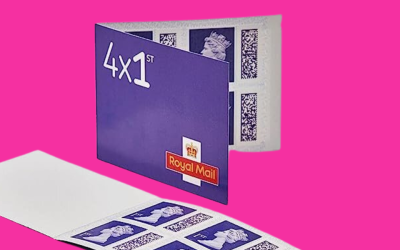[cs_content][cs_section parallax=”false” style=”margin: 0px;padding: 45px 0px;”][cs_row inner_container=”true” marginless_columns=”false” style=”margin: 0px auto;padding: 0px;”][cs_column fade=”false” fade_animation=”in” fade_animation_offset=”45px” fade_duration=”750″ type=”1/1″ style=”padding: 0px;”][cs_text]To add insult to injury, the Royal Mail has introduced an increase to the cost of both first and second-class postage stamps, with a first class stamp rising to 62 pence and a second-class stamp rising to 53 pence.
With the questionable sale and privatisation of the Royal Mail still fresh in the public’s minds, this price increase is likely to be anything but welcome. It has been two years since the Royal Mail last announced increases in postage prices, with the first class stamp going from 46 pence then to 60 pence, until the 1st April 2014 when the new prices take effect. However, the Royal Mail assures us that the price increase is more than fair, with their ‘one price goes anywhere service’ costing as much as £7 billion per year to run.
[/cs_text][x_custom_headline level=”h2″ looks_like=”h4″ accent=”false”]How do UK stamp prices compare to the rest of Europe [/x_custom_headline][cs_text]Stephen Agar, Managing Director for Consumer and Network Access at Royal Mail believes “our prices remain amongst the best value for money in Europe”. The newly privatised company later added that under the Royal Mail’s current regulatory framework, the increases could have been much higher, for example, a second-class stamp could have increased by as much as 7 pence instead of the 3 pence it has increased by. Whilst Mr Agar may have a point regarding European pricing, the news of price increases has only added fuel to the already burning flames surrounding the company.
The average cost for a postage stamp across countries such as Germany, Italy, Spain and France is reportedly 67 pence for first-class and 60 pence for second-class which is considerably higher than in the UK. We may not be happy about the recent price increase, but when compared to the rest of Europe, it does seem that we are getting a better deal.
[/cs_text][x_custom_headline level=”h2″ looks_like=”h4″ accent=”false”]How does the increase effect businesses[/x_custom_headline][cs_text]Despite the introduction of electronic mail, mailing letters, brochures and other marketing literature through the traditional route of the Royal Mail is still an essential for most businesses, and probably always will be. However, the increase in stamp pricing has to be a concern for businesses and whilst the increase may be minimal this year, what will the future hold for postage pricing. Businesses will now have to make the unwanted decision of whether to attempt to absorb postage costs where possible or to bite the bullet and pass those costs onto the consumer.
For those businesses that rely on marketing literature, one of the most ideal solutions to the cost hike is to utilise the services of an independent mailing house. Mailing houses can offer affordable postage solutions and often bulk postage discounts, allowing businesses the chance to avoid high postage prices and dissatisfied consumers.
The future of the Royal Mail remains to be seen, but they are far from impressing the UK public so far.
Image Credit: drivethrucafe[/cs_text][/cs_column][/cs_row][/cs_section][/cs_content]






